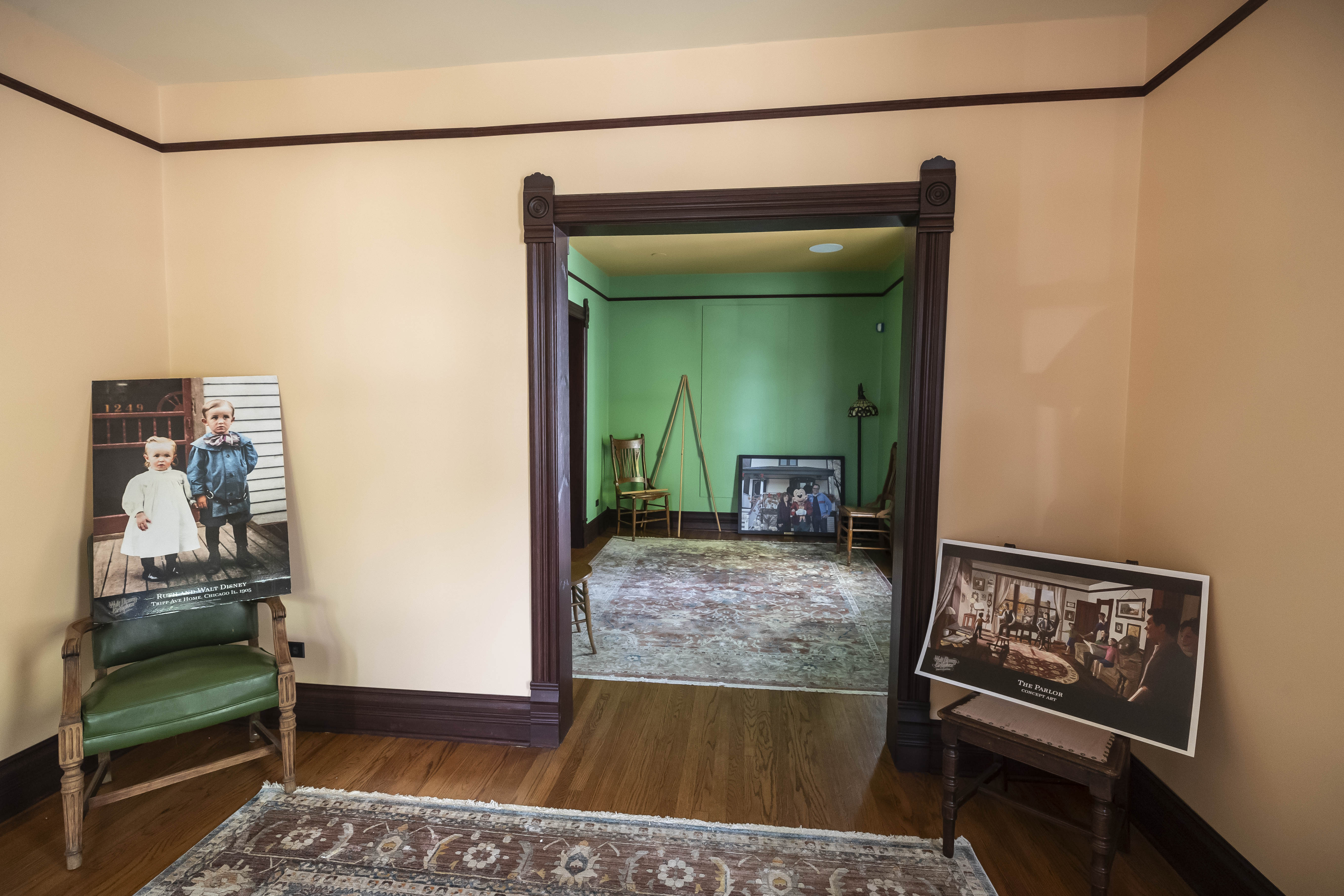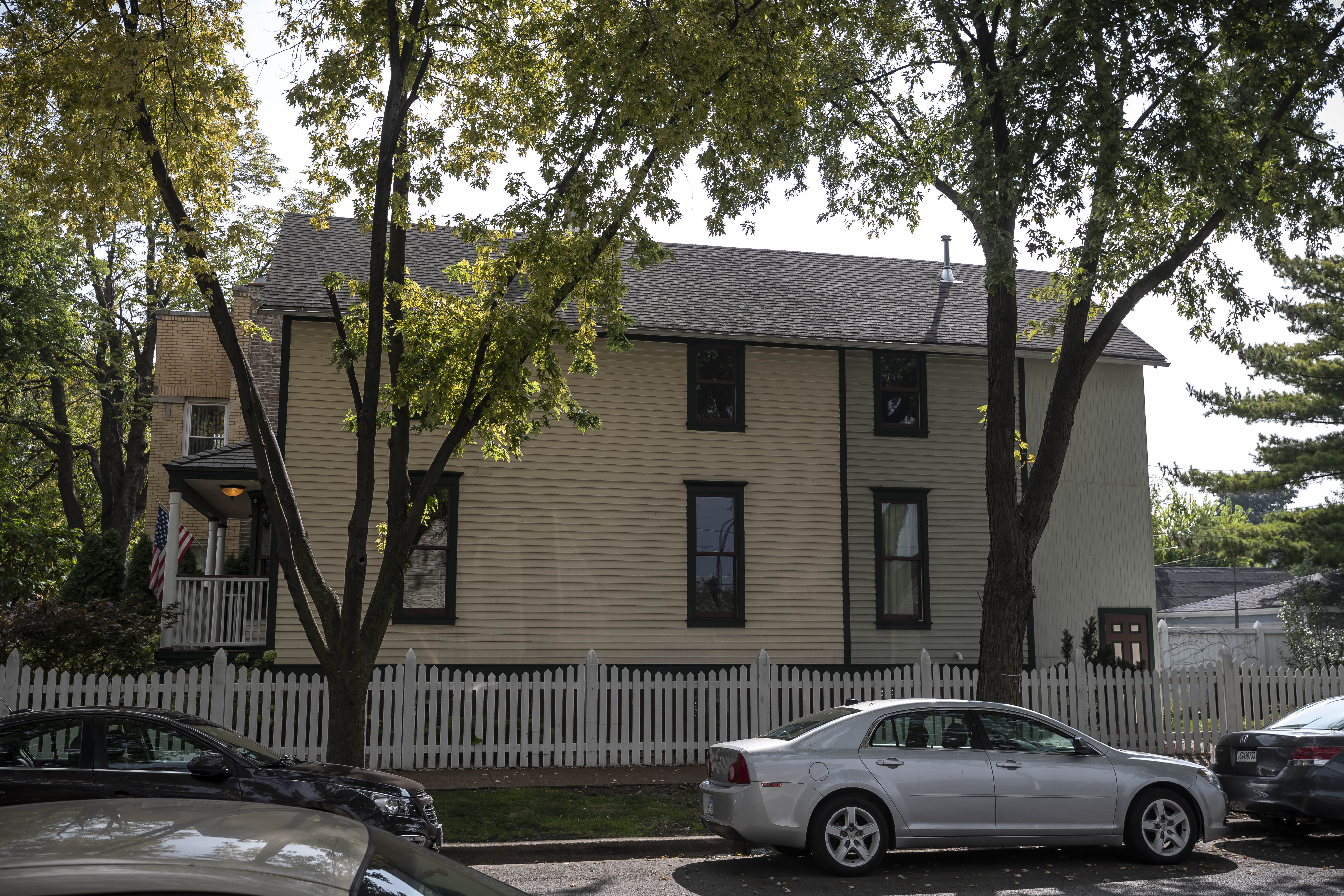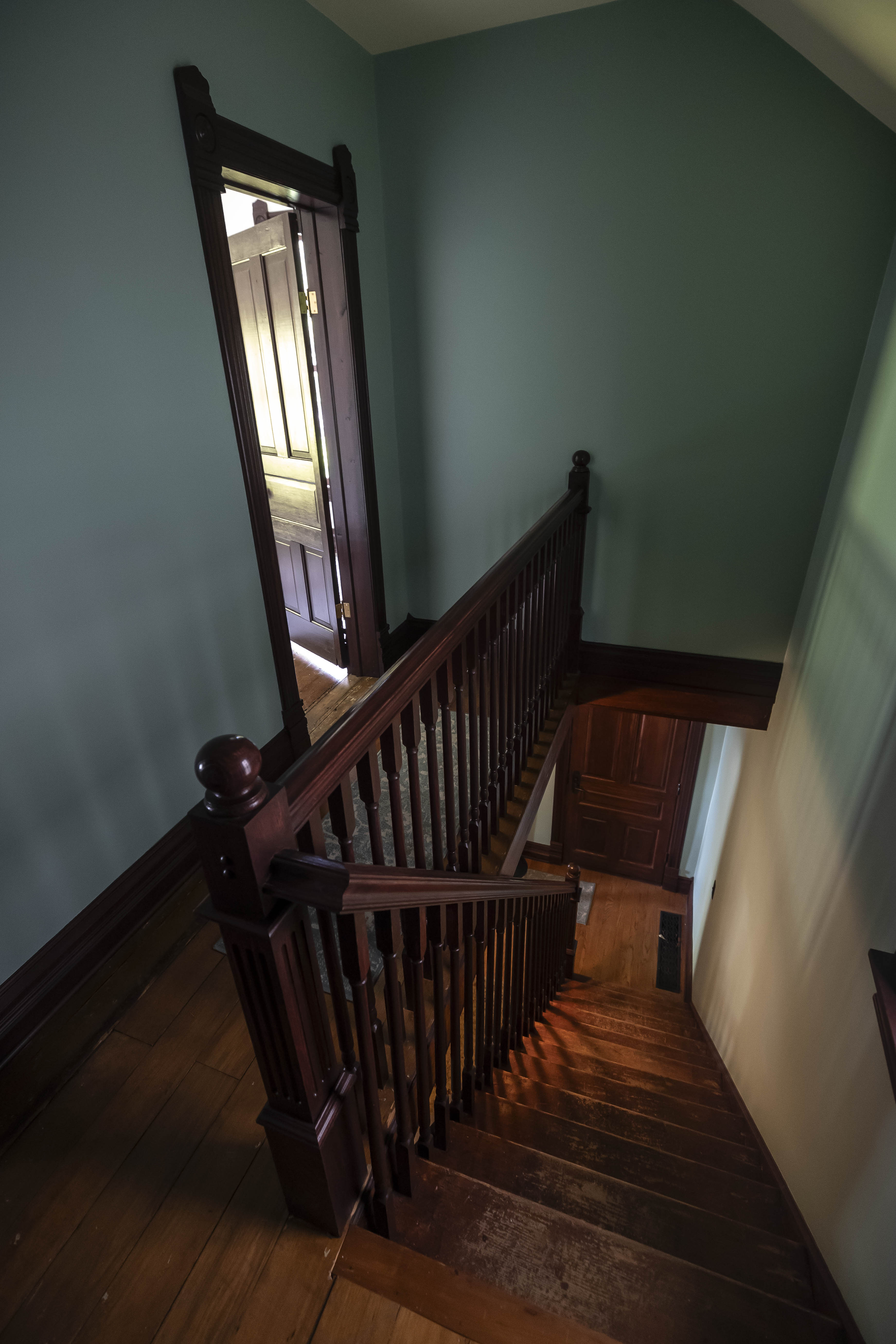With a white picket fence, a big front porch and an old-time wooden screen door, the house at 2156 N. Tripp Ave. looks like a throwback to something you might see in a live-action Disney movie made in the 1950s or ’60s.
The house is a Disney production of another kind: It was designed by Flora Disney, the mother of animation and movie giant Walt Disney, and built by her husband, Elias Disney. The couple moved in with two young sons in early 1893 and had three more kids, all born here.
One of the three was Walt, who would grow up to make movies like Cinderella, create Mickey Mouse and have massively successful theme parks. Walt was born in the house Dec. 5, 1901, roughly eight years after the birth of his brother Roy, who would grow up to be the business partner who ran the studio while Walt did the creative work.

On Saturday, Chicagoans for the first time can get a look inside the house where these two brothers were born. The showing is a feature of Open House Chicago, the annual weekend organized by the Chicago Architecture Center when about 170 buildings throw open their doors for free tours.
“Walt came from humble beginnings in a little house in Chicago but he didn’t give up on his dreams,” said Rey Colon, the former Chicago City Council member who manages the house for its owners, Dina Benadon and Brent Young. “This house is symbolic of that, that even from humble beginnings you can follow your dreams and change the world. Walt did that.”
But there’s a caveat: The house has not been open publicly until now, so it’s likely to draw a big crowd on Saturday afternoon. So people who want to maximize their Open House Chicago time might want to focus on other sites.
Long lines at the Walt Disney Birthplace?
Check out Reset's other top stops at this year's Open House Chicago, including the Forum, a historic Bronzeville music venue, or the Killing Fields Memorial in Lincoln Square, the only U.S. institution devoted to the Communist Party’s killing of 1 million people in Cambodia in the 1970s.
Elias and Flora moved from Florida to Chicago in 1890. Elias worked in construction on the World’s Columbian Exposition in Hyde Park and started building houses that Flora designed. Along with the home for their family, the Disneys designed and built two others on the block, still standing at 2114 and 2118 N. Tripp Ave. Elias was also the building contractor for St Paul's Congregational Church, built in 1900 around the corner at 2255 N. Keeler Ave. and now the home of Iglesia Evangelica Bautista Betania. According to Werner Weiss, the keeper of an encyclopedic Disney website called Yesterland, Elias Disney and Rev. Walter Parr of St. Paul’s were such good friends that Elias named his fourth son, Walt, after the pastor.

The Disney family left Chicago in February 1906, when Walt was 4 years old, and moved to a small town in Missouri. Six decades later, Roy Disney said the family moved to get away from crime in Chicago. Describing the area as a “rough neighborhood,” he said two boys in a family they were close to “were involved in a car barn robbery. Shot it out with the cops, killed a cop. One of them went to Joliet [Correctional Center] for life.”

Some of the family, including Walt, moved back to Chicago in the 1910s. Walt spent a year at the old McKinley High School (now Chicago Bulls College Prep) and took art classes.
In subsequent years, the Disneys’ old 18-by-28 ground-level cottage on Tripp Avenue was lifted up onto a foundation, giving it an English basement typical of Chicago homes, expanded off the back and divided into a two-flat.
In 1991, city officials started talking about landmarking the building, but the owner of two decades pushed against the idea. Six years later the effort fizzled because by then the owner, June Saathoff, was firmly against it. Landmarking, she said, “would impose unfair restrictions” on the property, such as preventing demolition and requiring landmarks officials to sign off on changes to the windows. City officials dropped the idea, deferring to the property owner.
Saathoff sold the building in 2002 for $190,000, according to the Cook County Clerk, and it sold again in 2013 for $173,000 to Benadon and Young.
The home looked nowhere near as charming as it does now. It was wrapped in white aluminum siding then and had no front porch. The house has been transformed, using clues from a pair of photos from the Disneys’ years in the house, details of the other two houses Elias and Flora did on the block, and what Colon calls “forensic demolition,” where they stripped away latter-day details to find out what was underneath.

Among the discoveries were original wood trim in a hall closet they used to re-create trim throughout the house. When they pulled up a layer of flooring on the second floor, they found not only the original floor but a secret compartment in the primary bedroom’s floorboards. Colon later learned from a Disney archivist that Walt saved the tin box that fit into that compartment, where his parents kept their kids’ birth certificates and other important papers. The front screen door’s Victorian wood curves are re-created from a photo of Walt and his baby sister, Ruth, that has the door in the background.

Under the aluminum siding, owners found what they say they believe is original 1890s wood siding. On the long side of the house, they’ve delineated the Disney-years house from its later addition: yellow is the original part, and the green part toward the back is what was added later.
The work is far from finished. Colon, who estimates the work so far has cost “an easy million,” says plans call for a very Disney-esque feature. The rear interior wall of the original house has no windows, because there are latter-day rooms on the other side. Colon says Young and Benadon envision putting up artificial windows with high-tech display screens that show a re-created early-1900s scene out back. “You’d see and hear horses riding by,” as the Disneys would have, he said.
There’s no firm timeline, Colon said. In 2015, the owners told the Chicago Tribune they might have it open by the end of that year. Eight years later, it’s not done.
Even so, visitors show up all the time, sometimes unannounced. Colon said he often gets calls from people visiting Chicago from other countries who want to see the building, and he lets them in. He has seen them arrive wearing Mickey Mouse ears or other Disney clothing. He showed one man through the house who spoke in a Mickey Mouse falsetto the entire time. He finds Disney character dolls and books left on the front steps in tribute.
“I grew up watching Disney on TV and Disney movies like everybody else,” Colon said. “I consider myself a fan, but when I see these people I feel like I’m a lightweight.”
Dennis Rodkin is the residential real estate reporter for Crain’s Chicago Business and Reset’s “What’s That Building?” contributor. Follow him @Dennis_Rodkin.
K’Von Jackson is the freelance photojournalist for Reset’s “What’s That Building?” Follow him @true_chicago.



